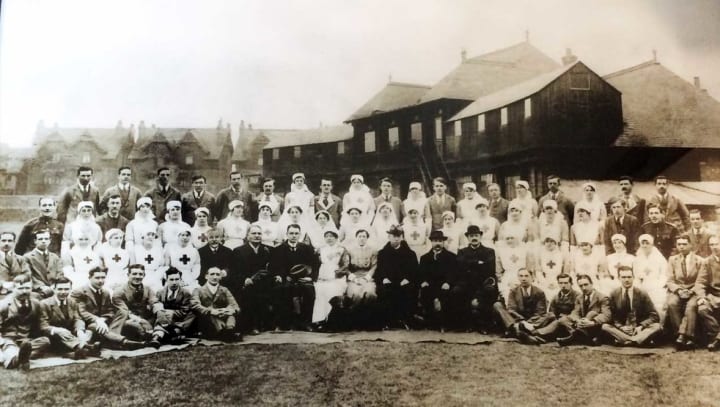Even today, there’s an almost tangible sense of history about the Trent Bridge Pavilion. It’s a building steeped with tradition – walls decked with images and names celebrating some of the finest personalities in cricketing history.
However, behind the honours boards, signed bats and memories of past glories lies possibly one of Trent Bridge’s most valuable assets, the building itself.
100 years ago, with the world facing conflict, the Club’s Committee made the Pavilion available to the military authorities as a hospital for wounded soldiers.
With the blessing of the membership, and in the absence of any first class cricket during the War, the Pavilion was converted to house as many as 36 patients during 1914.
Its use increased through the conflict. By 1916 the Pavilion had the capacity to house 100, and it was estimated that in excess of 1,200 soldier-patients had passed through the hospital at that stage.
In 1917, further additions meant Trent Bridge was one of the best-equipped hospitals in the country, saving servicemen who had been disabled in action from becoming permanently crippled.
The end of the War in 1918 did not herald the end of the Pavilion’s use in this time of need. It continued to service as a hospital until March 1919, by which time it had come to the aid of some 3,553 patients.
Not content solely to function as a hospital in this time, Trent Bridge also arranged cricket matches for recuperating servicemen and young people to aid their recuperation and maintain morale during those darker days.
The Club, and those associated were indebted to Lady Bruce, the President of the Hospital and the Committee in working tirelessly to ensure that many lives were saved in a time where comforts had become hard to find.
For more information about the ground's history, visit the Trent Bridge History site here.
